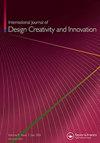对Dorian marjanoviki关于设计创意研究的简短采访:“寻找新的文艺复兴”
IF 2.5
Q4 ENGINEERING, MANUFACTURING
International Journal of Design Creativity and Innovation
Pub Date : 2019-04-03
DOI:10.1080/21650349.2018.1542808
引用次数: 0
摘要
如今,我们有很多渠道可以分享思想、经验和抱负,但大多数渠道都是短暂的。相反,我们认为知识渊博的人的思想应该得到充分的时间来消化和反思。因此,《国际设计创意与创新杂志》将在下一期社论中发表设计科学与创意领域知名学者的见解,目的是促进我们学科的长期讨论。最近,我们有机会在萨格勒布大学举办的“设计研究——质量、创造力和创新的社会技术方面”国际研讨会上见到了Dorian Marjanović教授。这是启动我们倡议的绝佳时机,因此我们请Marjanović教授简要分享他对过去几十年来设计创意研究最重要成就的看法,以及对设计创意领域研究人员应应对的当前挑战的看法。他的善意回答随之而来。设计在不断发展。从传统的类别转向以多学科项目为主的大规模服务设计、社会系统和复杂性项目,设计正在远离其以产品为中心的起源。设计创意研究认识到设计的当代性和设计师所面临的问题,比以往任何时候都更像是对“在一个领域中移动的生物”的研究。设计中的创造力源于所有人类经验,这些经验是通过嵌入个人“设计经验”中的几代人的知识而收集的。我们可以将设计创意研究视为对设计体验和创作的探索,试图全面了解创意,而不受副产品领域的限制,而是将创意与功能不断平衡。有进取心的创造力。设计创意研究建立在认知、商业与管理、教育、社会、艺术等学科跨学科研究的复杂继承之上。很难概述研究方案、术语、方法以及研究结果的实际价值中的所有重叠和差异。虽然认知科学的研究是以度量和测量为导向的,但教育和商业学科往往强调增强个人和群体的创造性潜力。与此同时,设计创意研究致力于开发理论上合理且具有实际意义的模型,以使灵感更有效地转化为实质。考虑到设计作为一门开发“新事物”的学科的复杂性,研究结果不可避免地只包括局部视图,即“生物”的简短图像,在照片拍摄后很长一段时间内都会继续移动。有大量研究成果在个人或团队层面分析了设计师的创作过程。设计师的抽象能力以及看到“森林中的树”的能力已经得到了探索,设计师在开发传统上不参与的流程和系统的团队中受到欢迎。这种多学科的方法也朝着另一个方向发展:非设计专业人员参与设计团队。这种团队构成在协同创新设计项目中的影响和价值,以及对非设计师创新解决方案的贡献,还有待分析。国际设计创意与创新杂志2019,第7卷,第1–2、1–2期https://doi.org/10.1080/21650349.2018.1542808本文章由计算机程序翻译,如有差异,请以英文原文为准。
A short interview with Dorian Marjanović on research in design creativity: ‘A Search for a New Renaissance’
Nowadays, we have plenty of channels where to share thoughts, experiences, ambitions, but most of these channels turn out to be ephemeral and evanescent. On the contrary, we believe that thoughts of knowledgeable people deserve to be digested and reflected upon with adequate time. For this reason, the International Journal of Design Creativity and Innovation will dedicate its next editorials to the publication of insights from prominent scholars in design science and creativity, with the aim of promoting a long-term discussion in our discipline. Recently, we had the chance to meet Prof. Dorian Marjanović at the International Workshop ‘Design Research – Sociotechnical Aspects of Quality, Creativity and Innovation’ organized by University of Zagreb. It was the perfect occasion to start our initiative and so we asked Prof. Marjanović to briefly share his thoughts on the most significant achievements of the research on design creativity in the last decades and on the current challenges that researchers working in the field of design creativity should address. His kind answers follow. Design is evolving. Moving from traditional categories to predominantly multidisciplinary projects dealing with service design, social systems, and complexity at a large scale, design is moving away from its product-focused origins. Acknowledging the contemporary aspects of design and the problems designers address, design creativity research is more than ever research of ”living things moving in a field”. Creativity in design arises from all the human experience gathered through knowledge of generations embedded in the ‘design experience’ of individuals. We may view design creativity research as an exploration of design experience and creation, an attempt to get a comprehensive insight into creativity, not constrained by by-product domains but rather as creativity engaged in a constant balancing act with functionality. Creativity with a desire to advance. Design creativity research is built on the complex inheritance of trans-disciplinary research in cognitive, business and management, education, social, art, and other disciplines. It is hard to outline all the overlapping and discrepancies in the research protocols, in the terminology, in the methodology as well as in the practical value of the research outcomes. While the research in cognitive sciences is oriented to metrics and measurement, educational and business disciplines tend to emphasise the enhancements of the creative potentials of individuals and groups. At the same time, design creativity research endeavours to develop models, theoretically sound with a practical implication that will enable a more efficient transformation of inspiration into substance. Considering the complexity of design as a discipline of developing ‘the new,’ the research outcomes unavoidably encompass only partial views, a brief image of ‘living things’ that will keep on moving long after the picture was taken. There is a significant body of research outcomes that analysed the creative processes of designers at the individual or team level. The abstracting ability of designers as well as the ability to see ‘a tree in a forest’ has been explored, and designers are welcomed in teams that develop processes and systems where they traditionally have not been involved. This multidisciplinary approach is also going in the other direction: non-design professionals take part in design teams. The influence and value of such team composition in collaborative innovation design projects and contributions to innovative solutions of non-designers are yet to be analysed. INTERNATIONAL JOURNAL OF DESIGN CREATIVITY AND INNOVATION 2019, VOL. 7, NOS. 1–2, 1–2 https://doi.org/10.1080/21650349.2018.1542808
求助全文
通过发布文献求助,成功后即可免费获取论文全文。
去求助
来源期刊

International Journal of Design Creativity and Innovation
ENGINEERING, MANUFACTURING-
CiteScore
3.80
自引率
27.80%
发文量
15
期刊介绍:
The International Journal of Design Creativity and Innovation is an international publication that provides a forum for discussing the nature and potential of creativity and innovation in design from both theoretical and practical perspectives. Design creativity and innovation is truly an interdisciplinary academic research field that will interest and stimulate researchers of engineering design, industrial design, architecture, art, and similar areas. The journal aims to not only promote existing research disciplines but also pioneer a new one that lies in the intermediate area between the domains of systems engineering, information technology, computer science, social science, artificial intelligence, cognitive science, psychology, philosophy, linguistics, and related fields. The journal covers, but is not restricted to, the following topics: ·Theories on Design Creativity and Innovation ·Cognition of Design Creativity ·Innovative Process ·Inventive Process ·Analogical Reasoning for Design Creativity and Innovation ·Design Synthesis ·Method and Tools for Design Creativity and Innovation ·Representation of Design Creativity and Innovation ·Education for Design Creativity and Innovation ·Concept Generation and Inspiration.
 求助内容:
求助内容: 应助结果提醒方式:
应助结果提醒方式:


